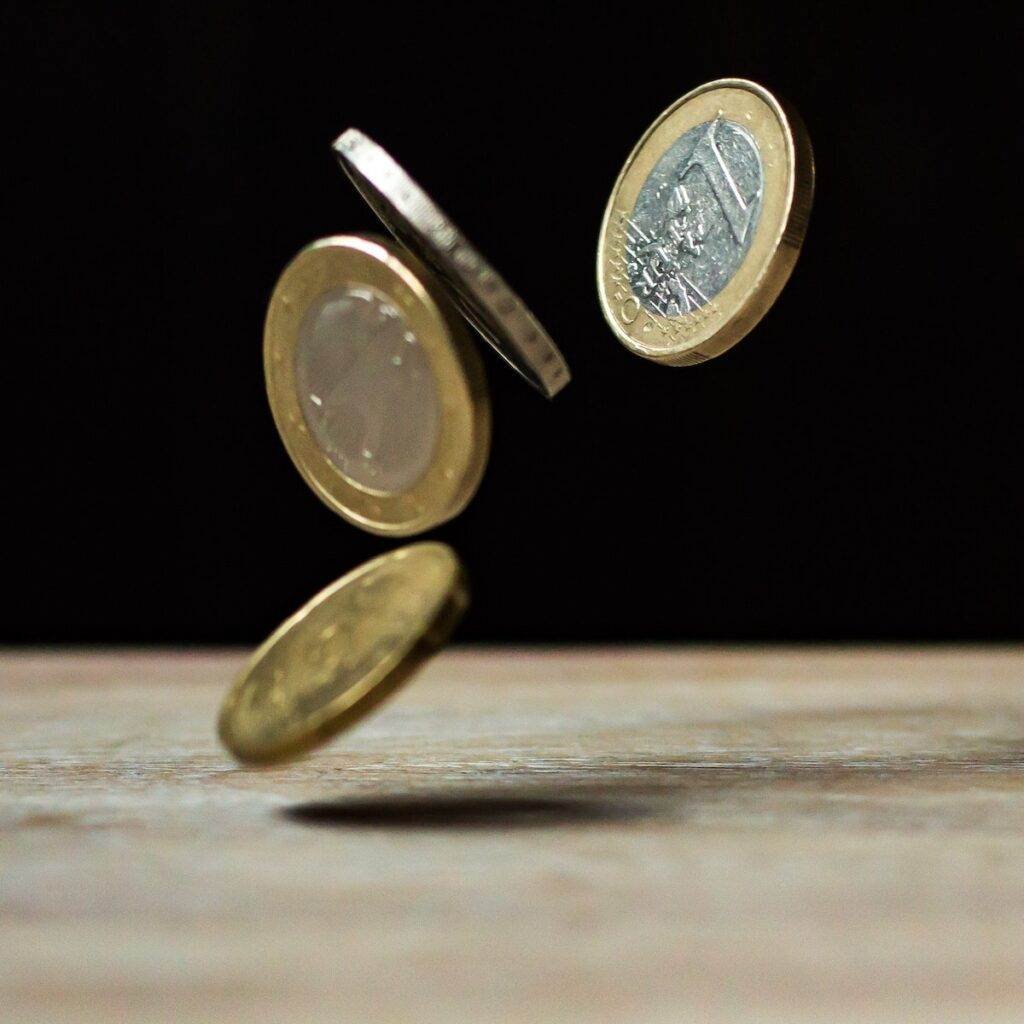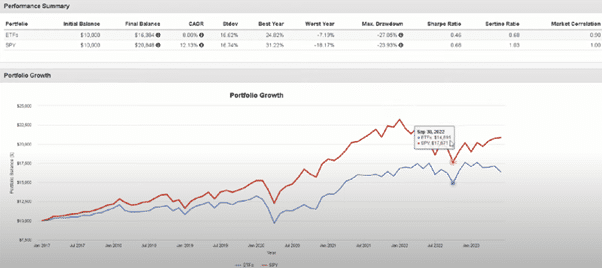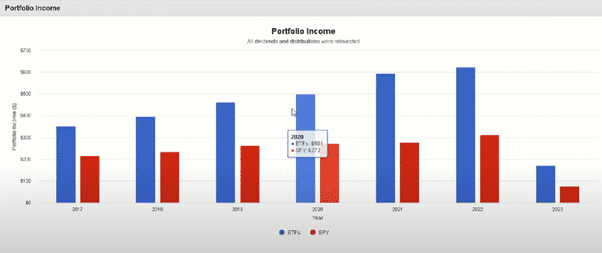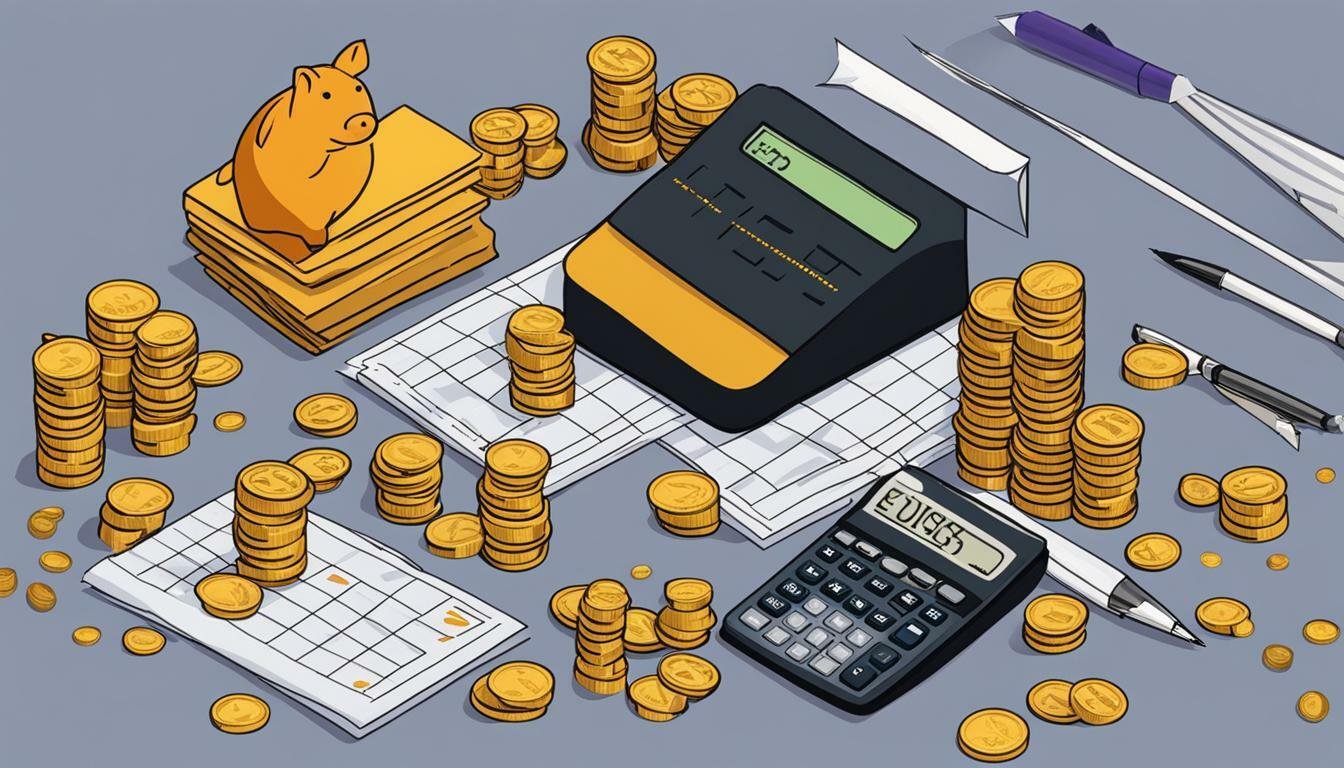Dividend investing has become an increasingly popular strategy for investors seeking to generate income and build wealth over the long term. But what are the best dividend ETFs for 2023? With low interest rates and market volatility, many investors are turning to dividend-paying stocks as a way to achieve steady returns and mitigate risk.
In this post, we will explore four exchange-traded funds (ETFs) that are specifically designed for dividend investing. These ETFs offer a convenient and cost-effective way for investors to gain exposure to a diversified portfolio of high-quality dividend-paying companies.
One of the main benefits of using ETFs for dividend investing is that they provide instant diversification. Rather than having to research and select individual stocks, investors can simply purchase shares in an ETF that tracks a specific index or sector. This can help reduce risk by spreading investments across many different companies, industries, and geographic regions.
The best dividend ETFs for 2023 we will discuss are:
- Schwab US Dividend Equity ETF (SCHD)
- iShares Core High Dividend ETF (HDV)
- Vanguard International High Dividend Yield Index (VYMI)
- Global X MLP and Energy Infrastructure ETF (MLPX)
Each of these funds offers unique features, such as exposure to different sectors or geographic regions, varying levels of yield and growth rate potential, as well as differing levels of concentration among holdings.
In subsequent sections, we will take a closer look at each of these best dividend ETFs for 2023 individually, examining their historical performance, holdings composition, diversification strategies, fees/expenses involved in holding them within one’s portfolio among other things. We’ll also discuss how they compare with one another in terms of yield/growth rate potential so you can make more informed decisions when choosing which ones fit your investment needs best.
Overall, this post aims to provide readers with an introduction to the world of dividend investing through the use of these four specific ETFs. By the end of it all, you’ll have a better understanding of how these funds work and how they can be used to build a diversified, income-generating portfolio that will stand the test of time. So let’s dive in!
Schwab US Dividend Equity ETF – best dividend ETFs for 2023 all-rounder!
Investors seeking stability and income from their investments often turn to dividend investing. Dividend-paying stocks have historically provided investors with consistent returns, even during volatile market conditions. In this section, we’ll take a closer look at the Schwab US Dividend Equity ETF (SCHD), one of the four best dividend ETFs for 2023 that make a compelling case for building a diversified dividend portfolio.
SCHD is an ETF that invests in high-quality, blue-chip U.S. companies with a record of paying dividends consistently over time. It aims to track the Dow Jones U.S. Dividend 100 Index, which includes companies that have been paying dividends for at least ten consecutive years. As of December 31, 2020, SCHD had a total net asset value of $20 billion and held over 100 stocks.
One key feature of SCHD is its historical performance and dividend growth rate. Since its inception in October 2011, SCHD has generated an average annual return of around nine percent, outperforming the S&P 500 by around one percent annually on average during the same period. Moreover, SCHD’s portfolio has demonstrated steady growth in its dividend payouts over time.
Another aspect to consider when investing in any security is diversification across holdings and industries. SCHD’s top ten holdings make up about one-third of its total portfolio value but are spread across different sectors such as healthcare, consumer staples, and industrials.
In addition to diversification across sectors, it’s also important to analyze concentration among the holdings themselves when choosing an ETF for your portfolio. SCHD’s largest holding makes up less than five percent of its total assets under management (AUM). This indicates that there isn’t excessive concentration in any one stock within this fund, providing diversificaiton.
Finally, it’s worth noting that SCHD has a low expense ratio at just six basis points per year or $6 for every $10,000 invested. This makes it one of the most cost-effective options available in the dividend ETF space.
In conclusion, SCHD is a good option for investors looking to build a diversified portfolio of US dividend-paying stocks. Its historical performance and growth rate in dividends make it an attractive choice. Additionally, its diversification across holdings and concentration among stocks are also noteworthy aspects that make it a viable option for investors seeking stability and income from their investments.

iShares Core High Dividend ETF
When it comes to dividend investing, there are a few key factors that investors should consider when looking for the best dividend ETFs for 2023. One of those factors is yield, or the amount of income an investment generates relative to its price. Another factor is growth rate, or how much the dividend payout has increased over time. We will be discussing the iShares Core High Dividend ETF (HDV), which aims to provide exposure to high-quality U.S. companies with above-average dividend yields.
HDV tracks an index that includes approximately 75 stocks, all of which have a history of consistently paying above-average dividends and strong financials. The fund also employs a screening process to exclude companies with high levels of debt or insufficient liquidity.
One important metric for evaluating an ETF’s performance is its yield. As of early 2021, HDV’s yield was around 3.6%, slightly higher than the Schwab US Dividend Equity ETF (SCHD) discussed in the previous section. However, it’s worth noting that HDV’s growth rate has been somewhat slower than SCHD’s in recent years, suggesting why it is important to have a mix when searching for the best dividend ETFs for 2023.
When it comes to diversification within HDV, the fund is heavily concentrated in consumer staples and healthcare stocks. These two sectors make up more than half of the fund’s holdings by weight. While this level of concentration may not be ideal for some investors seeking broad diversification across various sectors and industries, it does reflect HDV’s focus on relatively stable companies with consistent cash flows.
Compared to SCHD, HDV has a slightly higher expense ratio at 0.08%. However, this fee is still relatively low compared to many actively managed mutual funds and other investment vehicles.
One potential downside of HDV is that it may not provide enough international exposure for some investors’ tastes as it focuses solely on U.S.-based companies.
Overall, iShares Core High Dividend ETF can be a solid choice for investors seeking exposure to high-quality U.S. companies with above-average dividend yields. While its concentration in certain sectors may not be ideal for everyone, its relatively low expense ratio and consistent track record of generating income make it a worthy consideration.
Next, we will be discussing the Vanguard International High Dividend Yield Index (VYMI), which provides exposure to international companies with high dividend yields. With this addition, investors can further diversify their portfolios and potentially increase their income streams.

Vanguard International High Dividend Yield Index – best dividend ETFs for 2023 with diversification
As we continue our exploration of the four ETFs that can form the core of your dividend investment portfolio, we will now take a closer look at the Vanguard International High Dividend Yield Index (VYMI). How can the inclusion of internationalization help with the best dividend ETFs for 2023?
The VYMI is an excellent choice for investors who want to diversify their portfolio beyond U.S. stocks. This ETF tracks the performance of the FTSE All-World ex US High Dividend Yield Index, which includes companies located in developed and emerging markets outside of the United States that have high dividend yields.
One of the key advantages of investing in VYMI is its international exposure. By diversifying globally, investors can reduce their overall risk and potentially benefit from economic growth in other parts of the world. In addition, VYMI has a higher dividend yield than SCHD and HDV, making it an attractive option for income-seeking investors.
Over the past five years, VYMI has had a total return of 5.65%, which is comparable to SCHD’s return but slightly lower than HDV’s return. However, it is important to note that VYMI’s expense ratio is higher than both SCHD and HDV. Cost isn’t the only thing to worry about when hunting for the best dividend ETFs for 2023, but it is a key consideration.
Looking at its holdings, VYMI is well-diversified across various industries with financials being its largest sector weight followed by consumer goods and healthcare. The top ten holdings make up approximately 25% of its assets under management (AUM), which provides adequate diversification but still suggests some concentration risk.
When compared to SCHD and HDV, VYMI’s geographic concentration may be a concern for some investors as it has a significant allocation towards Japan (approximately 21% as per June 2021) followed by Australia (13%) and UK (12%). While this allocation may provide exposure to developed market economies outside North America, it also means that returns may be sensitive to developments in Japan’s economy, which could make VYMI less diversified than SCHD and HDV.
In summary, VYMI is an excellent ETF for investors seeking international exposure and high dividend yield. However, investors should be aware of its higher expense ratio and geographic concentration risk.
As we have seen in this section, VYMI can be a valuable addition to a diversified portfolio built with dividend ETFs. Next, we will explore our final ETF option – the Global X MLP and Energy Infrastructure ETF (MLPX).

Global X MLP and Energy Infrastructure ETF
As we continue to explore the four ETFs that can help you build a strong dividend portfolio, it’s time to turn our attention to the Global X MLP and Energy Infrastructure ETF (MLPX). This fund has a unique focus on the energy sector, which can be both a blessing and a curse for investors. However, the income opportunity is important when thinking of the best dividend ETFs for 2023.
First, let’s take a closer look at what MLPX offers. This ETF tracks an index that includes master limited partnerships (MLPs) and companies that own energy infrastructure assets such as pipelines and storage facilities. As of this writing, the fund holds 30 stocks with an average yield of around 7.5%. That’s among the highest yields of any dividend ETF out there. The sector is known for strong yields, along with other sectors such as REITs.
Of course, there are some risks associated with investing in MLPX. One is that it is heavily concentrated in the energy sector. If oil prices drop or there is another disruption in the industry, this could have an outsized impact on your investment returns.
Another risk is related to taxes. Because many of these companies are structured as MLPs rather than traditional corporations, investors may face complicated tax reporting requirements come tax time.
That said, for investors who are comfortable with these risks, MLPX can be a powerful way to generate income from their portfolios. The high yield combined with potential capital appreciation from investing in energy infrastructure assets can make for an attractive long-term investment proposition. In this way, there are similarities to many utility investment opportunities.
When compared to the other three ETFs we’ve discussed so far (Schwab US Dividend Equity ETF, iShares Core High Dividend ETF, and Vanguard International High Dividend Yield Index), MLPX stands out due to its unique focus on energy infrastructure assets.
This focus means it has less diversification across sectors than some of its peers – around 85% of its holdings are within the energy sector – but it also means it offers exposure to a part of the market that other dividend ETFs simply don’t cover.
It’s worth noting, however, that MLPX has a different risk profile than the other ETFs we’ve discussed. The energy sector can be more volatile than other sectors due to factors like geopolitical events and fluctuations in commodity prices. As such, investors should carefully consider their risk tolerance before investing heavily in MLPX.
In terms of performance, MLPX has generally held up well over time. Over the past five years (as of this writing), the fund has returned an average of around 5% per year, which includes both capital appreciation and dividend payments. While this is lower than some of its peers – SCHD and HDV have both returned around 8% per year over the same period – it’s still a respectable return given the focus on income generation rather than capital appreciation.
So where does MLPX fit into your overall dividend portfolio? That depends on your individual investment goals and risk tolerance. If you’re looking for high yield and are comfortable with investing in the energy sector, then MLPX could be a good fit for you.
However, it’s important to remember that diversification is key when building any investment portfolio. As such, you may want to consider holding multiple dividend ETFs (including those we’ve discussed in previous sections) to ensure you have exposure across sectors and geographies.
In the next section, we’ll discuss how to allocate funds among these four ETFs based on your individual preferences and goals. But before we get there, take some time to consider whether Global X MLP and Energy Infrastructure ETF is right for you. With its unique focus on the energy sector and high yield potential, it could be just what your portfolio needs to generate income over the long-term.

Building a diversified portfolio with the four ETFs
Now that we have thoroughly reviewed the four ETFs that can be utilized for your dividend portfolio, it’s time to discuss how to build a diversified portfolio using these funds. Before discussing a sample allocation strategy, let’s first consider some factors that may influence your investment choices.
Investors’ individual preferences and goals play a crucial role when deciding on an investment strategy. It is essential to understand your risk tolerance level and financial objectives before allocating funds among different ETFs. Some investors may prefer aggressive growth strategies with higher-risk investments, while others may prioritize stability and income generation through dividends.

After understanding your individual preferences and goals, you can allocate funds among the four ETFs based on their unique features. One possible way of allocating capital could be investing 40% in SCHD, 30% in HDV, 20% in VYMI, and 10% in MLPX. This allocation strategy aims to provide diversification across multiple industries while balancing international exposure with domestic holdings.
It is essential to note that this allocation strategy is only an example; investors should adjust their allocations based on their risk tolerance level and financial objectives. Additionally, as market conditions change over time, reevaluating investment strategies periodically is crucial.
Implementing a rebalancing strategy over time within each of the four ETFs can also help maintain an appropriate asset mix aligned with investment objectives. For example, suppose one of the four ETFs significantly outperforms others or has more significant exposure than initially planned due to market fluctuations. In that case, it may be necessary to sell some shares from winning positions or purchase additional shares of underperforming assets back into balance.

In conclusion, building a diversified dividend portfolio using these four ETFs requires understanding individual preferences and goals while utilizing unique fund features strategically. By allocating funds appropriately across different asset classes and rebalancing periodically over time effectively, investors can achieve a diversified and stable income-generating portfolio while mitigating risk. Over time, the compounding of income can create a powerful dividend snowball!
Here we conclude our guide to the Four ETFs for your dividend portfolio. We hope you found it informative and helpful in building a successful investment strategy. Remember, always do your due diligence before investing and consult with a financial advisor if necessary. Happy investing!
Putting It All Together
We’ve discussed four ETFs that are ideal for building a dividend investment portfolio. In this final section, we’ll take a closer look at how you can put these four ETFs together to create a diversified portfolio that meets your individual needs and goals.

Before we begin, let’s recap the key benefits of dividend investing and why using ETFs can be an excellent way to go about it. Dividend investing is an approach where investors focus on companies that pay out regular dividends instead of relying solely on capital appreciation. The primary benefit of dividend investing is the regular income it provides, making it an attractive option for those looking to generate passive income.
Now, let’s start by taking a closer look at each ETF and their unique features. First up is the Schwab US Dividend Equity ETF (SCHD). SCHD has consistently delivered strong returns over the years with a historical performance of 9% annually since inception. This fund also has an above-average yield compared to other US equity funds with similar investment objectives.
Next up is iShares Core High Dividend ETF (HDV). HDV boasts a higher yield than SCHD but comes with slightly lower growth rates overall. However, HDV offers more diversification across sectors such as healthcare and consumer staples than SCHD.
The Vanguard International High Dividend Yield Index (VYMI) offers investors exposure to international markets while still providing high yields and growth rates similar to the two previously mentioned funds. VYMI also provides broader diversification across different industries such as financials, industrials, and real estate.
Finally, Global X MLP & Energy Infrastructure ETF (MLPX) focuses on energy infrastructure stocks in North America with attractive yield rates but potentially more volatility due to its concentration in one sector.
Now that we’ve reviewed the best dividend ETFs for 2023 and looked at their features, let’s discuss how you can use them together to build your portfolio. The key to building a diversified portfolio is to balance your investments across different asset classes and sectors. A balanced approach will help reduce the risk of losses while still providing attractive returns.
For example, you could invest 25% of your portfolio in SCHD, 25% in HDV, 20% in VYMI, and finally 30% in MLPX to gain exposure to the energy sector. This allocation would provide a well-diversified portfolio with exposure across different sectors and markets. In this portfolio, we have the best dividend ETFs for 2023 combined and working together.
It’s important to note that this allocation is only an example and should be adjusted based on individual preferences, risk tolerance, and financial goals.
In conclusion, using ETFs for dividend investing can be an excellent way to generate passive income while still providing attractive returns over time. By using Schwab US Dividend Equity ETF (SCHD), iShares Core High Dividend ETF (HDV), Vanguard International High Dividend Yield Index (VYMI), and Global X MLP & Energy Infrastructure ETF (MLPX) together in a diversified portfolio, you can build a solid foundation for your dividend investment strategy. Remember always to keep your long-term goals in mind when making investment decisions.

Dr. Lincoln C. Wood teaches at the University of Otago in New Zealand. He is an avid investor and educator. He loves cash flow, income, and dividends when investing. He likes to buy undervalued companies with strong advantages and earnings growth.







